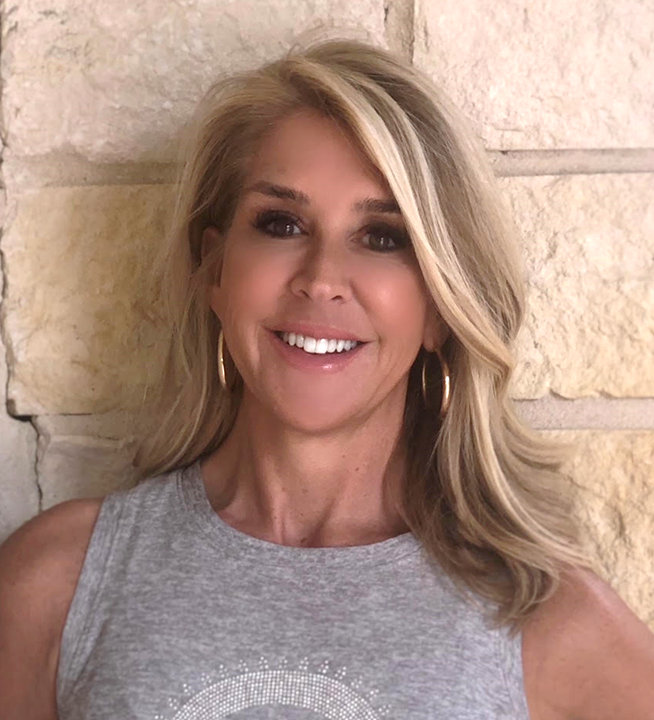Most women, even if not fully versed on all the symptoms to expect, are somewhat familiar with the concept of menopause, which officially begins once you’ve gone a full 12 consecutive months without a period. However, many women often don’t fully understand the stage of perimenopause, or the transitional time that precedes menopause, where many women start to experience a variety of the 34 currently recognized symptoms of the menopause transition.
Perimenopause can involve a wide range of symptoms, which result from the volatile fluctuations in estrogen and progesterone levels, along with other hormones, experienced during this time. These hormone changes can bring about symptoms like vaginal dryness, hot flashes, night sweats, mood changes, and irregular periods.
What Are Perimenopause Sugar Cravings?
Another symptom that’s not considered to be uncommon during perimenopause is an increase in food cravings, particularly for sugar and junk food.
“Before and during the change of life known as menopause, a major shift in mood and hunger regulating hormones can lead to intense food cravings, making it more difficult to maintain a healthy body weight and peace of mind,” explains Sheri Berger, a registered dietitian nutritionist in San Jose, California.
Even if they haven’t associated them with menopause, most women aren’t strangers to food cravings. In fact, according to a 2022 study, over 85% of women report food cravings as a premenstrual syndrome symptom, making it the most commonly experienced symptom during that time.1
“The data shows the cravings can also increase as women approach perimenopause,” Berger says.
While there’s nothing wrong with indulging in sweets and sugary treats in moderation, it makes sense that you’d want to better understand what’s causing this increase in desire for these foods, especially if the perimenopause sugar cravings seem incessant. Read on to learn more about what causes perimenopause cravings, as well as how to manage them.
What Causes Perimenopause Foods Cravings?
According to Berger, perimenopause food cravings are often an intense desire for sweet, salty, or fatty foods that present during a period of hormonal shifts that occur during perimenopause.
“There is a shift in hormones, [which includes a] decline in estrogen and leptin and an increase in ghrelin (known as “the hunger hormone”), that impacts a woman’s desire for comforting foods that help her to feel full,” Berger explains.
Research also suggests that ghrelin increases during perimenopause,2 adds Nichole Dandrea-Russert, a registered dietitian nutritionist in Atlanta.
“This may trigger our brain’s hunger cues, causing women to crave food even when they aren’t actually hungry, due to ghrelin’s role in increasing food cravings and reward-driven eating behaviors,” Dandrea-Russert explains.
Perimenopause sugar cravings may also be a result of stress, Dandrea-Russert adds.
“Older research suggests that cortisol levels may increase during perimenopause, as well.3 Cortisol can lead to cravings for sweet, fatty, and salty foods,” Dandrea-Russert advises.
Why Do I Crave Sugar in Perimenopause?
Finally, the fatigue that may occur during perimenopause can, “lead to cravings for simple carbohydrates and sugar for an instant boost in energy, which is what can make these cravings start to seem unmanageable,” Dandrea-Russert says.
“While simple carbohydrates and refined sugar may provide instant energy, that energy does not last and will result in an energy crash soon after, [leaving you to crave] more sugar again,”4 Dandrea-Russert concludes.
What Types of Cravings are Most Common During Perimenopause?
According to Berger, some of the most common perimenopause cravings include salty, sweet, starchy, and fatty comfort foods. Examples include indulgent foods and dishes such as chocolate or macaroni and cheese, or salty snacks like French fries and chips.
Healthy Snacking Tips for Perimenopause
When it comes to dealing with sugar cravings, the last thing you should do is turn to unhealthy behaviors like restricting calories or forbidding yourself from eating certain foods.
“Do not skip meals; [instead], plan ahead for more balanced, nourishing meals,” Berger says.
Berger also recommends making sure to include wholesome foods such as fruits, vegetables, and whole grains (such as quinoa, brown rice, farro, and barley), as well as lean protein (such as skinless chicken breast, fish, beans, tofu, and pork tenderloin), and heart-healthy fats such as nuts, seeds, and avocados.
“[These foods] will provide satiety, fulfill nutritional needs, and help to mitigate mindless snacking,” Berger advises.
“Minimize or avoid ultra-processed foods and sugary sweet snacks and instead try snacking on hummus and whole grain crackers, apples and nut butter, or chia seed pudding with plant-based milk and fruit,” Dandrea-Russert adds. “These combinations have a nice balance of protein and carbohydrates, plus fiber, to help manage blood sugar and cravings.”
Dandrea-Russert also recommends eating at regular times to maintain stable blood sugar levels – she also suggests including protein in every meal and snack for this same reason. Additionally, exercising regularly, staying hydrated, and trying to get seven to nine hours of sleep a night can also help.
When Should You See a Healthcare Provider About Perimenopause Sugar Cravings?
If you feel like you’re having a hard time managing your cravings, don’t hesitate to seek out professional advice.
“Working with a healthcare provider and dietitian who understands perimenopause and menopause can help to address lifestyle changes that may help manage cravings," Dandrea-Russert says. “[Additionally, work to] manage stress levels in whatever way makes sense to you – try journaling, immersing yourself in nature, meditating, doing breathwork, yoga, or other forms of stress relief that you enjoy and will do regularly.”
“A mental health professional can also help you work through this symptom,” Berger adds.
“A dietitian can help you to formulate a structured nutritional plan that fuels your body well, [while] a mental health professional can help to improve your relationship with yourself and food, leading you to a more positive mindset,” she concludes.
Ultimately, sugar cravings don’t have to wreak havoc on your lifestyle during perimenopause. By recognizing potential triggers and maintaining balance in your overall wellness routine, you can learn to manage them while still enjoying foods you love.
For some quick tips from Bonafide Chief Medical Officer, Dr. Alyssa Dweck, on how to manage cravings, check out the video below:
Resources
- https://www.ncbi.nlm.nih.gov/pmc/articles/PMC9492621/#:~:text=Frequency%20of%20premenstrual%20symptoms,fatigue%20(57.3%25)%20(Table%20%E2%80%8B
- https://onlinelibrary.wiley.com/doi/full/10.1002/oby.21790
- https://www.ncbi.nlm.nih.gov/pmc/articles/PMC2749064/
- https://www.ncbi.nlm.nih.gov/pmc/articles/PMC5373497/








